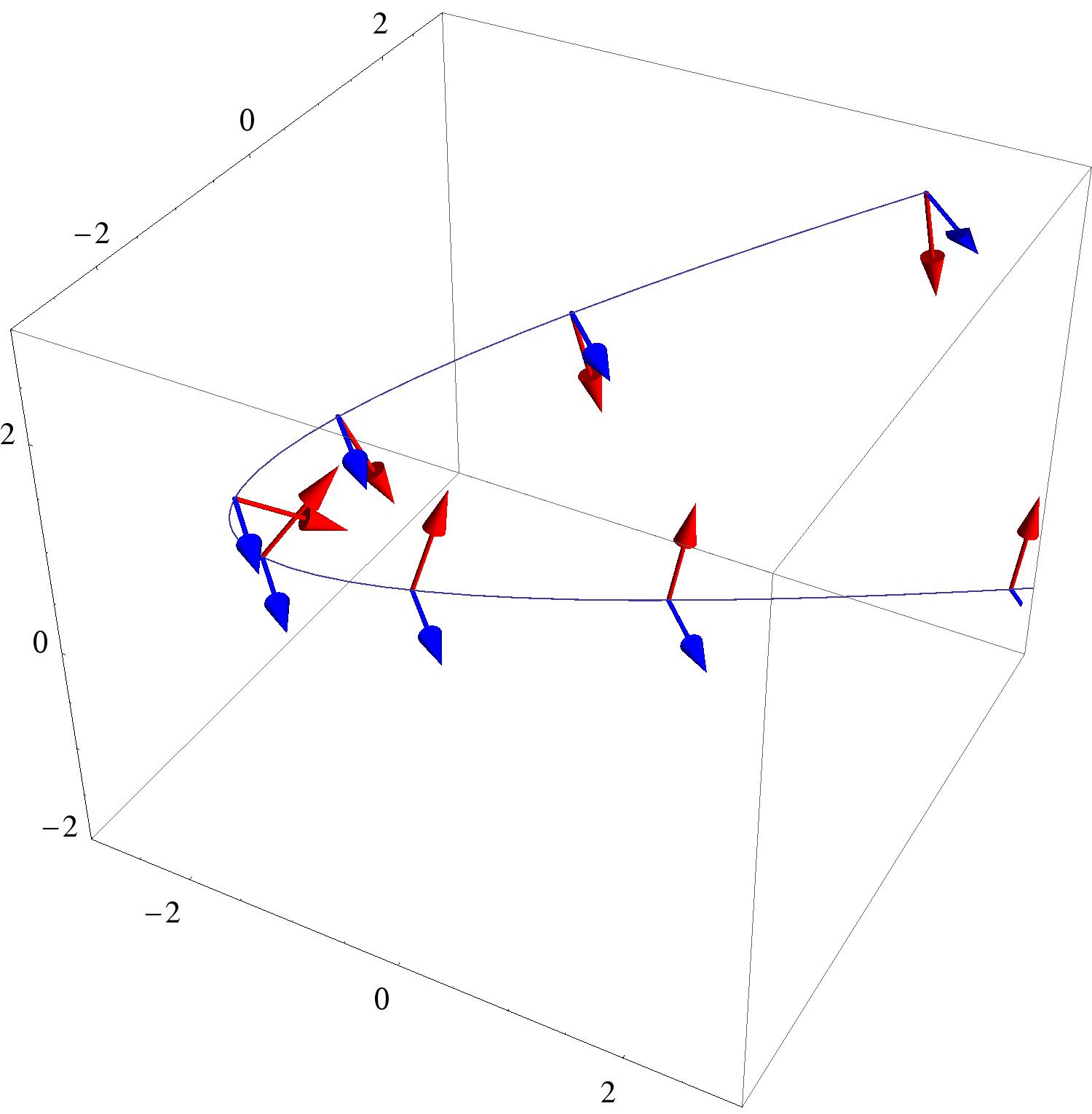Tangent and normal vectors can help us make interesting parametric plots.
A sine curve on a circle
Suppose you wish to draw a sine curve on a circle like this:
How do you do this? Well, a general method for placing one curve along another is to use unit tangent and unit normal vectors!
and the unit normal vector:
We’ve plotted our circle of radius with some unit tangent and unit normal vectors for your viewing pleasure:
We can confirm our construction by making a graph:
Thickening a curve
Suppose you have a vector-valued function that defines a curve in space, and you want to build a parameterized surface that looks like a “thickened” version of the curve. In other words, we want to convert a curve like


To plot a “tube” around a vector-valued function , we need three handy vectors:
- The unit tangent vector:
- The unit normal vector:
- The unit binormal vector:
Let’s see these vectors in action with our next example.


Here the function runs along the center of the tube, and and create a moving axis, where a circle is drawn. Putting this all together we get a tube drawn around . We can check our work with the following interactive: